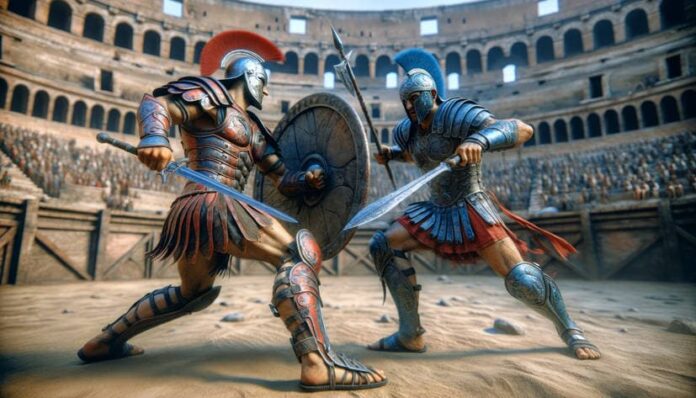Back in the old days, every Roman knows gladiators due to their notorious reputation for being brave and tough. Some gladiators were audacious and high-trained warriors who fought in the arena to entertain the crowd. There are many fascinating facts and pieces of information about gladiators that we don’t know about. Below are some incredible things about these Roman rock stars that you probably find cool and interesting.
1History
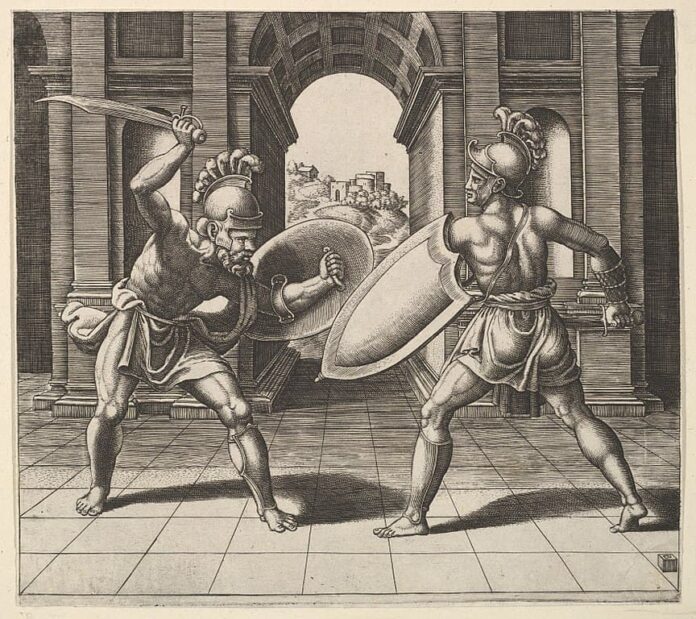
According to history, gladiator matches began as a crude of human rituals at funerals. Back then, noblemen or royalty would force slaves to fight to the death as part of a funeral service. For example, there were 22 fights for over 3 days to mark the passing of a senator in 216 BC. After some time, this ritual gained its popularity and became public display and matches among high-class people. The bigger the fight, the more expensive the event became. At the same time, housing gladiators were also pricey because huge sums of money were spent on the massive amphitheaters or arenas.
Mostly, the warriors were young fighters so the lives of gladiators were never longer than 30. Their brutal lives would end in their mid-20s because the warriors would always come back to fight even after winning. Historians estimate that the average gladiator would likely fight around 10 matches until he met his demise. Most gladiators fought only a few times a year, 4 to 5 times at most. If a gladiator made it out alive after combat, he would return to his training camp to recover until the next fight. For real gladiator celebrities, they would join the bout just once a year.
Despite the brutes and other fatal results, gladiators won massive fame among people in the lower and working classes. Similar to celebrities of our modern days, some fans would portray their favorite warriors on the walls of public places.
2Combat & Gladiator Types
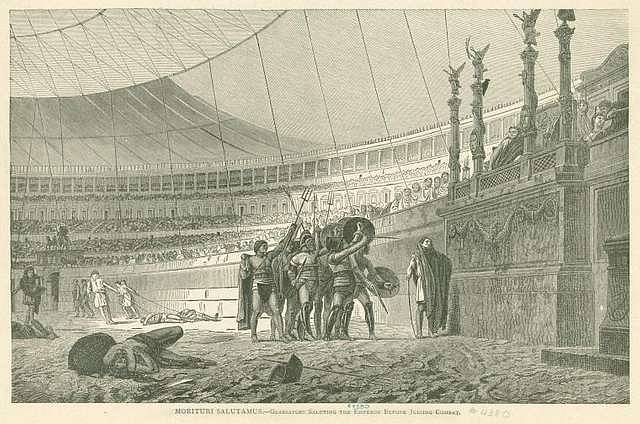
In the beginning, gladiator games were only freewheeling battles to the death. The moment the Colosseum opened in 80 A.D, combat became a well-organized blood sport between the young warriors. That was when there different combat classes and types that divide gladiators into various fights. Each gladiator was placed in classes based on their experience, record, and skill levels. Another combat type is based on the particular fighting style and set of weaponry that the warriors use. Some of the most common combat types were:
Dimachaerus
This was a type of Roman gladiator who fought with two swords, and the name means “bearing two knives”. Some sources suggested that a dimachaerus wore extremely minimal armor such as a balteus and leather wrappings, or none at all. There were also other sources that showed a dimachaerus with slightly heavier armor like mail shirts, visored helmets, etc. This type of combat involves close-combat fighting, where the gladiator would attack and defend at the same time.
Eques
Eques gladiators were a unique class with a fascinating type of combat where fighters started their battles on horseback. During the fight, 2 warriors started on horseback before they dismounted from their steeds and proceeded to fight on foot. Eques gladiators had 2 different types of weapons, one for horseback fights and another for combat on foot. The first weapon was a long-range spear and the second weapon was a gladius along with a small round shield. Gladiators of this combat type only had a helmet and regular armor for the fight. The beginning of the combat often made the crowd excited, and it was also a popular combat type back then.
Essedarius
An essedarius was a type of gladiator in Ancient Rome who fought from a chariot against a standing foe. During the combat, an essedarius would ride his chariot toward his foe with the intention to run them over. If unsuccessful, then he could try to attack the foe from his chariot using a spear or a sword. Some sources suggested that an elite essedarius would have a slave driver to assist him in the battle. This would give him a full chance to attack the foe without having to focus on driving the chariot. On top of that, he also had the upper hand with the weapons that he used. Typically, an essedarius carried 2 weapons: a spear to impale or throw and a Roman gladius as a side arm.
Hoplomachus
This type of gladiator resembles the Greek soldiers Hoplites, and their opponents were usually the Murmillo gladiators. Such pairing was a way for them to depict a larger Roman war against the Greeks on a smaller scale. Even the weaponry was also similar to the ones that hoplite soldiers used which was a Dory spear. Along with that, he also had a short gladius sword and a short dagger known as a pugio. This wide variety of weapons allowed the hoplomachus to be able to fight from various ranges of distance. Despite the advantage of weapon, a hoplomachus fought with a bare chest, and he only wore a loincloth and a helmet.
Murmillo
This was the most common and general type of gladiator in the Colosseum, appearing so many times in the games. Murmillo gladiators were created when the relations between Rome and the Gauls became more fruitful at the time. A murmillo gladiator had a gladius to attack his opponent with thrusting actions by aiming for the stomach or legs. The fascinating part is that his gladius was double-edged which he could also use for cutting and slicing. The most common opponents of this gladiator type was the hoplomachus, retiarius, and thraex.
Retiarius
So fascinating and unique, a retiarius gladiator was one of the most remarkable warriors of the Colosseum. The name retiarius literally means “net fighter”, and this was exactly the weapon that these fighters used. A retiarius gladiator fought with a net and a trident, the weaponry of a fisherman. Due to the difficulty of the weapons, this type of gladiator would need special training time to master his skills. Retiarius gladiator would have the advantage if he could successfully trap his opponent with his net.
Thraex
Originating from the warriors of Thrace, modern-day Bulgaria, thraex gladiators were among the strongest gladiators in Rome. Their helmet crest was the image of a griffin’s head, a powerful mythical creature who was the king of beasts. The main weapon of this gladiator was the sica, a short sword with a curved blade. This unique sword allowed a thraex gladiator to easily strike the posterior part of his opponent’s body. Because of their great strengths, thraex gladiators only had 2 common opponents which were the hoplomachus and the murmillo.
*Special Classes
There were combats between gladiators, and the most thrilling fights were between warriors and beasts. Known as Animal Hunts, this fight was typically the opening event at the games. It simply involved the gladiators slaughtering the beasts in a single exhibition to get the crowd excited for the fights. During the opening of the Colosseum alone, 9,000 animals were slain during a 100-day ceremony. Then another 11,000 creatures were killed as a part of a 123-day festival held by Emperor Trajan. This was actually a rare and uncommon fight, so there were only two types of classes who participated in this fight. Those include:
Bestiarii
While some gladiators were famous and noble, the bestiarii was not a different side of the book. The fighters of this type were not gladiators, they were often criminals or prisoners of battles and wars. So their punishment was to fight against fearsome beasts like a lion, which was likely to result in death. Since the bestiarii were not supposed to win, their weapons were cheap and disposable. Lions were not the only creatures that they had to fight. There were also bears, boars, bulls, cheetahs, hyenas, panthers, and tigers. In worst cases, they would also have to combat against a rhinoceros.
Venatores
As for the venatores, they were entertainers who thrived on the thrill of competing against animals. Venatores looked to prove their bravery and skills by combating animal foes like crocodiles, lions, and more. Basically, venatores gladiators would put on a show by fighting with herds of wild animals to please the crowd. Some venatores specialized in archery while others were best at using spears, either on foot or on horseback. There were also gladiator schools for training venatores to deliver the best hunting shows possible.
3Gladiators
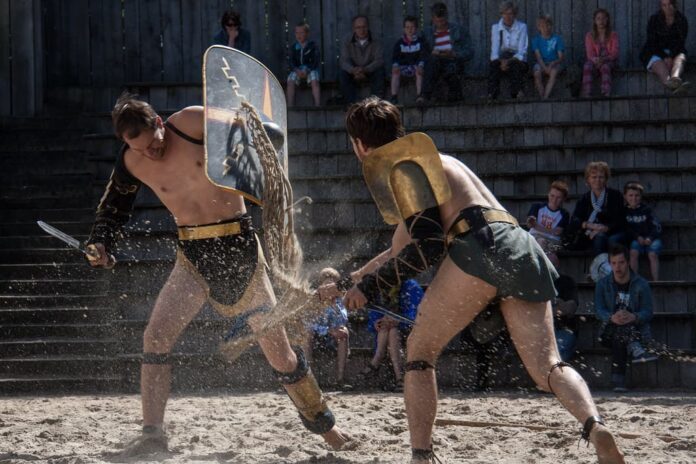
A majority of early gladiators were slaves or people who had committed crimes back then. As you have known, the fights between gladiators were never a pretty scene to watch. Some slaves ended up dead while the others lived to fight another day in the arena. Not all gladiators were slaves, and the audience could tell by how they were brought to the arena. If in chains, the fighters were slaves while there were also free men who volunteered to train and fight as gladiators. For prize money and winning glory, men would sign contracts with gladiator schools. Most of the free men who wanted to be gladiators were either desperate individuals or former skilled soldiers. Fighting as a gladiator was a wise career choice, especially for soldiers who were struggling with debt. Apart from those, knights, upper-class patricians, and even emperors would participate in the combats.
While most movies depicted men as fierce warriors, women also fought as Gladiatrix at that time. There were also woman slaves who were condemned to the arena alongside the male gladiators. The records show that female fighters did not wear helmets in the arena as to allow them to elaborate their hairstyles. Emperor Titus was one of the biggest fans of female gladiators, and he paid females good money to fight for him. However, some female gladiators were not taken seriously, Emperor Domitian pitted women against dwarves for the fun of the crowd. More than that, some brutal female gladiators were also involved in the animal hunts. However, Emperor Septimius Severus banned female warriors from the games around 200 A.D.
4Rules
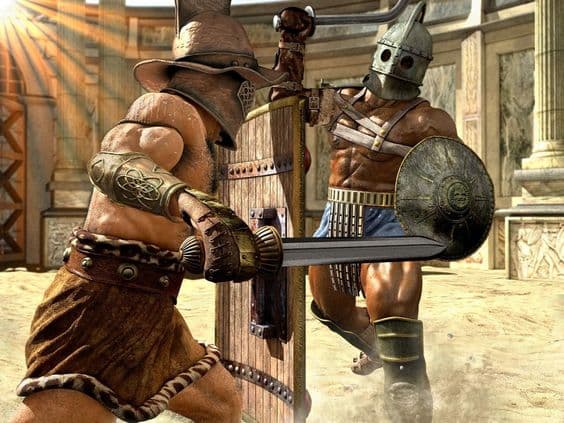
- The height or strength of a man was the fact that determined the class or gladiator he would fight as. This rule applied to all free men and slaves who would fight as gladiators. The type of fight or training would depend on a man’s physical stature. A larger and stronger man would likely be a dimachaerus as he was suitable to handle two swords at once.
- Despite the large muscle and superior strength, gladiators ate a vegetarian diet most of the time. A majority of the diet, at least 80% to be exact, included beans and slaves rather than meat. The warriors had no choice but to eat what they were given, only because it was cheaper for their managers. By managers, I refer to the owners of the gladiators because most of them were slaves.
- Trainers trained the warriors to wound not to kill because their managers wanted to make as much profit as possible. One of the key codes of the fight was to defeat the opponent without inflicting a mortal blow. This is why most combats ended in serious wounds, and the fighters survive to fight again once they recover.
- Most fights were under fairly strict rules and regulations between men of similar size as well as experience. There was also a referee in each combat who oversaw and control the whole process of the fights. He would also stop the combat if one of the gladiators was seriously wounded and could not continue the right.
- The gladiators had an oath that stated: “Uri, vinciri, verberari, ferroque necari”. This statement means “I am willing to experience torture through fire, through captivity, through assault, and through murder by the sword.” Every gladiator had to recite this oath when they first entered the arena.
- Gladiators could not refuse to fight, and the slave manager would attack those who refused with hot metal rods and whips. So if there was a schedule to fight, all gladiators must follow the rules.
Death & Stalemate
Before taking a body from the arena, officials had to make sure that the warriors were dead. Right in the middle of the arena, the officials would cut the fallen gladiator’s throat in front of the crowd. There were also expensive games where the officials would dress as Dis Pater, the God of the Underworld. In this case, he would swing his giant mallet to bash the heads of the fallen warriors instead of cutting their throats.
A match could also end in a stalemate if the crowd became bored during a long battle without a winner. This is a rare case, but the referee would allow both fighters to leave the arena with honor. In one famous incident, two legends of the arena Priscus and Versus, earned their freedom after battling for hours. Both opponents submitted at the same time after hours of matching their bravery and skill. In the end, these two warriors were awarded with wooden swords which represent their freedom.
All gladiators must be honorable and noble in death, and they are instructed to accept the will of their editor. They were to expect to accept death if the editor decreed that they shall die. No warriors were supposed to beg for mercy or even cry out. An honorable and noble gladiator would kneel on the arena floor and show his throat to the opponent to be cut. Upon death, his body would be treated with extra dignity by gracefully removing from the arena on a couch.
5Random Gladiator Facts
- Gladiator schools in the Roman Empire were nothing like the common schools that pupils go to. Those schools were more like prisons for condemned captives to live and train in. There was only one way in and out, and the gladiators lived in cells rather than dorms or rooms.
- Wealthy men called Lanistas were the owners of the schools, and they rented freelance gladiators for individual fights. The price of each fighter was different, depending on their experience and skills. The novices were the cheapest while veterans with fame and popularity were the most expensive warriors. However, the rental would turn into a sale if the fighter was killed during the combat.
- After a fight, gladiators drank water mixed with ashes to get their strength back. It was the perfect remedy for abdominal bruises and cramps, and it actually worked.
- The referees or umpires were retired gladiators, aka summa rudis, and they carried whips to keep the fighters in line. Along with that, they also have batons with which they could point out infractions to the head official or the editor. These retired gladiators were very elite officials, wearing white tunics with purple borders which was an imperial color. In the arena, an umpire had the power to decide a fallen fighter’s fate or to stop a bout.
Summa rudis were superstars in the gladiator world, and they could charge large sums to officiate contests. According to historians, many summa rudis earned both power and wealth in this second career. - During the training, gladiators would use wooden weapons rather than real sharp metal blades. This type of weaponry called rudis, and the slave would gain his freedom and this sword if he won.
- Noxii, the lowest of the low, was the class of gladiators who were criminals. The officials treated this class with no dignity after death by basing them with a big mallet before dragging them out. Also, Noxii did not receive a proper burial as their bodies would be tossed into a nearby river. Even worst, some would take their bodies out of town and left them in the wild to the beasts.
- This brutal game came to an end in the year 325 by Emperor Constantine, Roman’s first Christian Emperor. He was also the ruler who adopted Christianity as the sole religion of the Roman Empire. The emperor officially ruled that “such bloody games were unnecessary at a time of civil and domestic peace”. However, the slaves did not gain their freedom as they had to go back to work in the empire’s mines.
Related Post: Things You Don’t Know About Vikings

